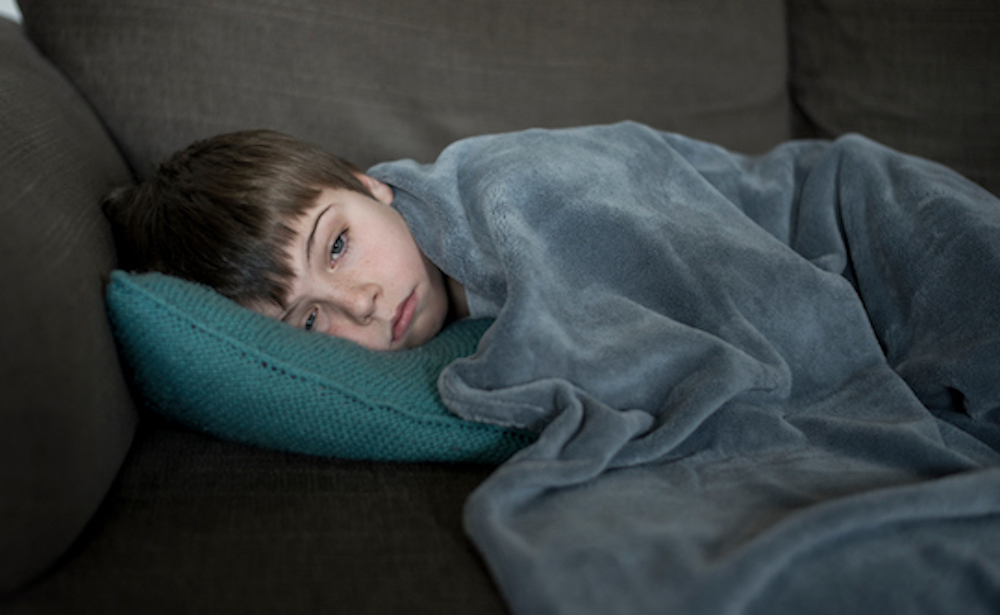Topics

Image Source
Despite its name, the "common" cold is one of the most bothersome childhood illnesses out there. Colds are upper respiratory infections caused by viruses, the most common being rhinovirus, followed by coronavirus, respiratory syncytial virus (RSV) and parainfluenza. These viruses infect the nose (causing a stuffy nose), throat (causing sore throats and coughs) and sometimes the lungs (causing cough and wheezing) and eyes (causing pink eye).
Viruses come in thousands of different "flavors," meaning the body has to learn to fight each one separately. This explains why, despite all our advances in modern medicine, there is no cure for the common cold. Antibiotics do notwork against colds because antibiotics do not kill viruses. Steroids also do not work against viruses.
The mainstays of treating the common cold are symptomatic management and supportive care. Parents can help by suctioning mucus, offering clear liquids and using cooling methods to reduce discomfort during fevers. With these measures, it is possible for children to feel better while their bodies fight off the cold. Medications such as acetaminophen and ibuprofen can also be used as needed for pain and discomfort with fever.
Young children (infants to preschool age) are expected to get seven to 11 colds per year, with each one lasting 10 to 14 days. That's almost half the year with some sort of sniffles, congestion or cough! It is very frustrating to parents and children alike. Fortunately, as the immune system matures, the number of colds decreases by the time most children enter kindergarten.
7 tips for home care for colds:
#1: Simple remedies are the best for colds in young children. Avoid over-the-counter cough and cold medications in children younger than 6. These products have been shown repeatedly not to work in children and they often contain multiple ingredients, increasing the chance of accidental overdose. The American Academy of Pediatrics does not support their use in infants and young children.
#2: Suction the nose frequently, especially before meals and sleeping. Traditional bulb suctions tend to have wider tips, making it hard for them to reach the back of little noses. Unless cleaned well, they can also harbor mold and dirt. Options with stronger suction are “snot suckers” powered by your mouth (like a NoseFrida) or electric ones. Administer a few saline drops, or a saline nasal spray (over-the-counter, safe for all ages), in each nostril a few minutes before suctioning to help loosen up the mucus.
#3: Turning on a humidifier at night helps keep secretions loose and easier to cough up. The moist air can also soothe sore and raw throats. If you don’t have a humidifier, try sitting in a steamy shower or bathroom with your child.
#4: Elevate the head of the bed so your child's head is higher than their body. This helps mucus drain down the throat instead of pooling in the back of the mouth. Consider an extra pillow for older children or sleeping in a tilted rocker for babies older than 6 months. Remember, babies should always sleep on their back.
#5: Honey, straight off the spoon or mixed with a hot drink, is helpful for soothing throats and treating cough. Infants younger than 12 months should not have honey because of the risk of botulism. Children ages 1 to 5 years can have ½ teaspoon (2.5 ml) of honey every four hours as needed. Children ages 6 to 11 years can have 1 teaspoon (5 ml) every four hours as needed.
#6: Vapor rub ointment applied to the upper chest and neck area before bed can help with severity and frequency of cough by producing a cooling sensation in the nose that helps children rest better and clear mucus. Children 2 to 5 years old can use 1 teaspoon (5 ml), and children 6 years and older can use 2 teaspoons (10 ml), massaged into the skin before bedtime.
#7: Soothe sore throats by having children sip on cool liquids, eat chilled purees (like apple sauce) or suck on a popsicle or ice chips. Children 4 years and older who are not at risk for choking can suck on a hard candy, which works as well as medicated cough drops without the side effects. Children older than 6 can also gargle with warm salt water. This can be made at home with ¼ to ½ teaspoon of salt per 8 ounces (approximately 240 mL) of warm water.
While most colds resolve within 7 to 10 days (and 10 to 14 days for younger children), you should contact your pediatrician if you notice any of the following:
- Breathing harder or faster than usual
- Fever (temperature higher than 100.4) for 5 or more days
- Peeing less than three times in 24 hours
- Unusual behavior or other parental concern
These tips will help soothe and comfort your child while their immune system works to fight off the cold. Of course, lots of hugs and kisses help too!
If you’re interested in finding your nearest Texas Children’s Pediatrics location, click here.



